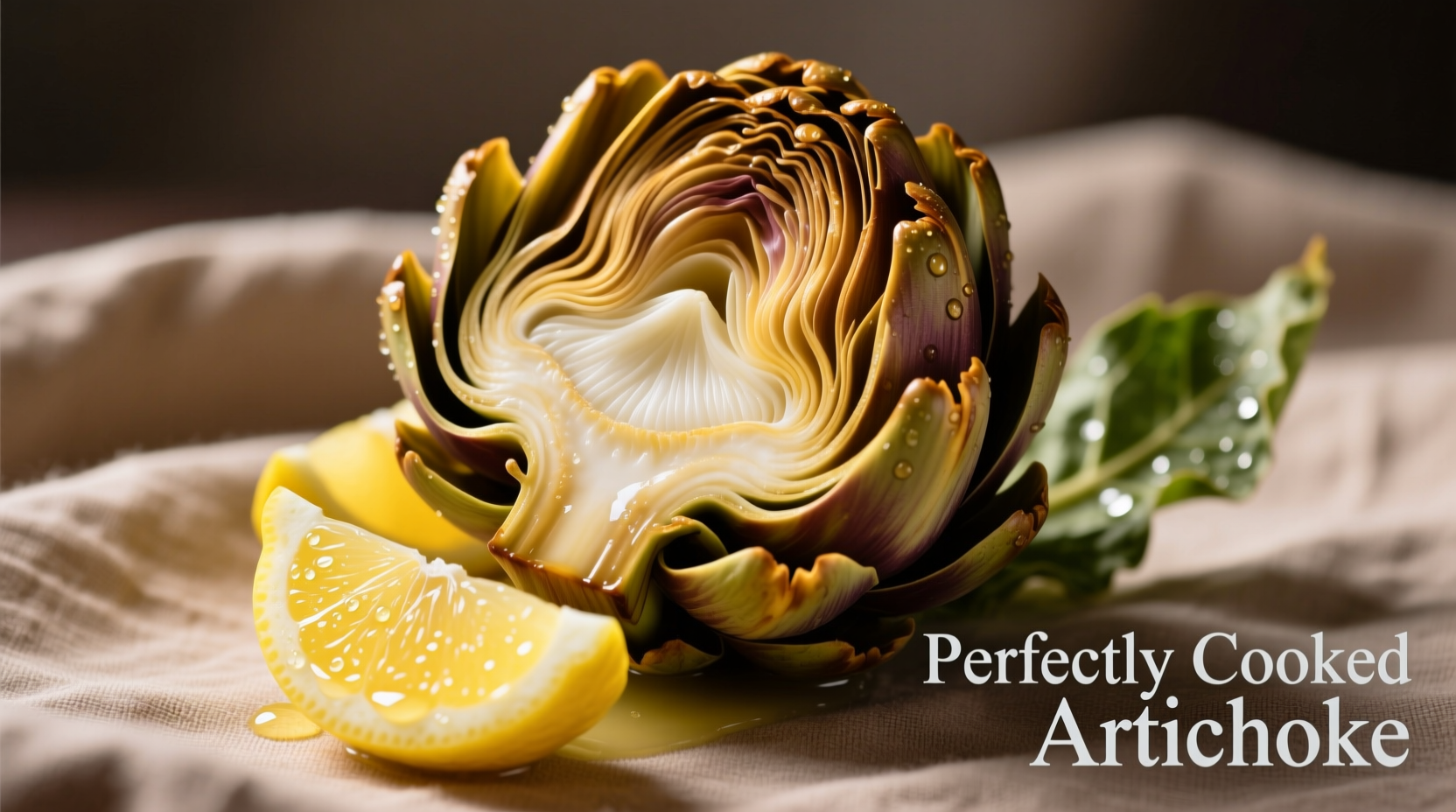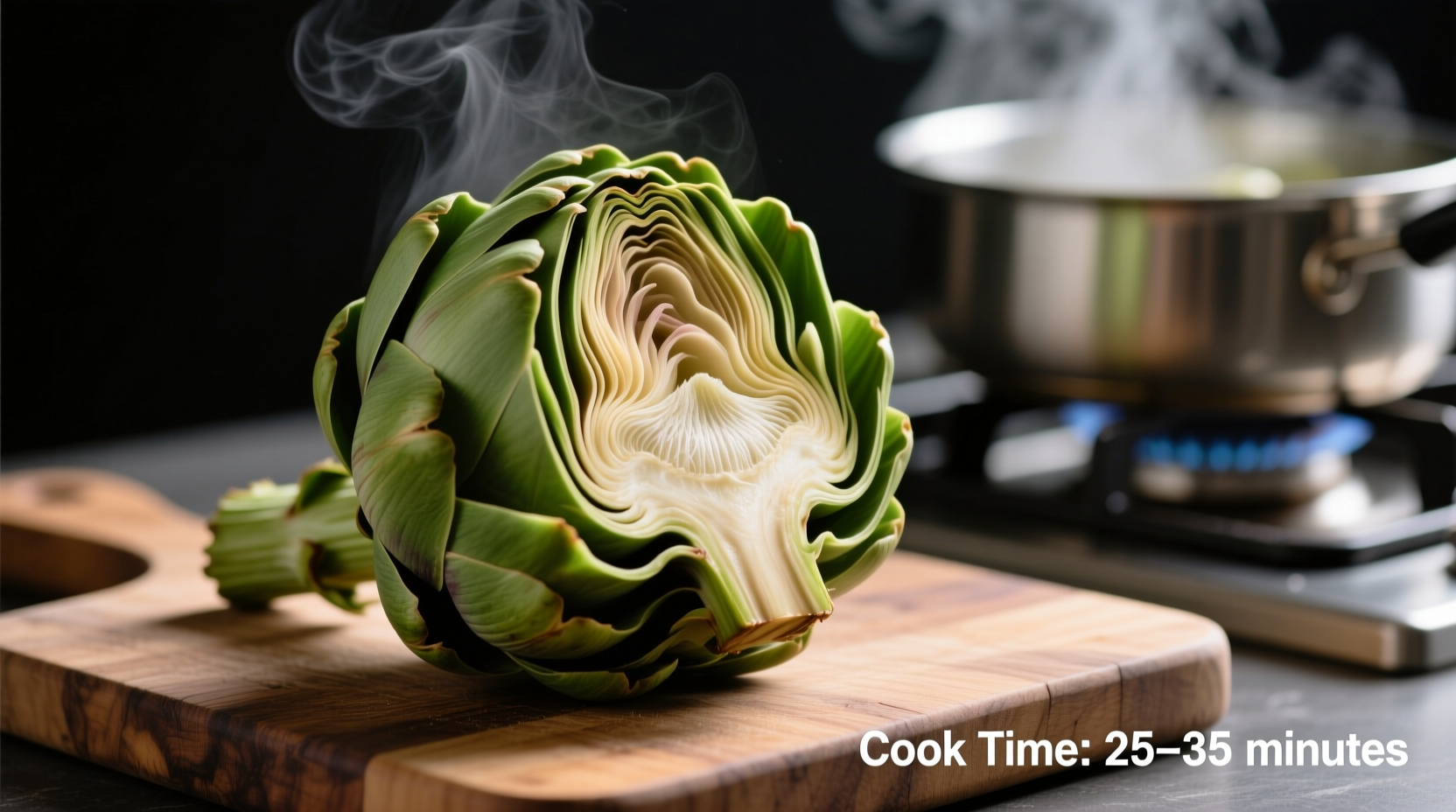Nothing compares to the delicate flavor of a perfectly cooked artichoke, but getting the timing right separates a tender heart from a disappointingly tough one. As a chef who's prepared thousands of artichokes across Michelin-starred kitchens and home cooking classes, I've mastered the precise timing that transforms this thorny vegetable into a culinary delight. Whether you're boiling, steaming, roasting, or pressure cooking, this guide delivers the exact cooking times you need based on artichoke size and your cooking method.
Why Artichoke Cooking Time Varies
Artichokes aren't one-size-fits-all. Their cooking time depends primarily on three factors: size, freshness, and cooking method. Larger artichokes contain more dense flesh that requires additional time to become tender. Freshly harvested artichokes from farmers' markets often cook faster than supermarket varieties that have traveled long distances. And crucially, your cooking method dramatically impacts timing—boiling submerges the entire vegetable in water, while steaming uses gentle vapor that penetrates more slowly.
| Artichoke Size | Diameter | Boiling Time | Steaming Time | Pressure Cooking |
|---|---|---|---|---|
| Small | 3-4 inches | 25-30 minutes | 30-35 minutes | 12-15 minutes |
| Medium | 4-5 inches | 30-35 minutes | 35-40 minutes | 15-18 minutes |
| Large | 5+ inches | 35-40 minutes | 40-45 minutes | 18-22 minutes |
Preparing Artichokes for Perfect Cooking
Proper preparation affects cooking time more than most home cooks realize. Start by selecting artichokes with tightly closed leaves and a heavy feel for their size—these indicate freshness and moisture content that impacts cooking duration. Trim about ½ inch from the top and snip thorny leaf tips with kitchen shears. Cut ¼ inch from the stem base to create a flat surface, then rub all cut surfaces with lemon to prevent browning. For faster cooking, especially with larger artichokes, make a shallow "X" cut in the stem base to help water penetrate the core.
Cooking Method Comparison
Each cooking technique delivers different results and requires specific timing adjustments:
Boiling Artichokes
The most traditional method involves submerging artichokes in salted water with lemon juice. Use a pot large enough to hold artichokes upright with their stems down. Bring to a rolling boil, then reduce to a gentle simmer. Cooking time starts when the water returns to a simmer after adding artichokes. Boiling typically takes 5-10 minutes less than steaming because water transfers heat more efficiently than steam.
Steaming Artichokes
Steaming preserves more nutrients and creates a cleaner artichoke flavor. Place artichokes upright in a steamer basket with 1-2 inches of simmering water below (never letting water touch the artichokes). Cover tightly and maintain steady steam. Steaming requires slightly longer cooking times than boiling because steam transfers heat less efficiently than water. The USDA Food Safety and Inspection Service confirms that steaming vegetables maintains higher nutrient retention compared to boiling (USDA FSIS).
Pressure Cooking Artichokes
For the fastest results, use an electric pressure cooker. Place 1 cup water in the pot with a steamer basket, stack artichokes upright, and cook on high pressure. Cooking time reduces dramatically—medium artichokes need just 15-18 minutes plus 10 minutes for natural pressure release. This method delivers consistent results with minimal monitoring.
Testing for Perfect Doneness
Timing provides a guideline, but the only reliable way to check doneness is through physical testing. The leaf pull test remains the gold standard: gently pull an outer leaf. If it comes out easily with tender flesh at the base, your artichoke is done. For complete assurance, insert a knife into the base—it should slide in with little resistance. Undercooked artichokes feel firm when squeezed, while overcooked ones become mushy with separation between leaves. Remember that artichokes continue cooking from residual heat for several minutes after removal from water or steam.
Common Timing Mistakes to Avoid
Many home cooks make these timing errors that ruin otherwise perfect artichokes:
- Starting timing when water boils—always begin timing when water returns to a simmer after adding artichokes
- Using one time for all sizes—a small artichoke overcooked by 10 minutes becomes mushy while a large one remains tough
- Guessing doneness—rely on the leaf pull test rather than just the clock
- Overcrowding the pot—cooking multiple artichokes requires 5-10 extra minutes as they lower the water temperature
Serving and Storing Cooked Artichokes
For optimal flavor, serve artichokes immediately after cooking while still warm. If you must delay serving, plunge cooked artichokes into ice water to stop the cooking process, then reheat by steaming for 5 minutes. Leftovers keep refrigerated for 3-4 days—store in an airtight container with a damp paper towel to maintain moisture. Reheat by steaming rather than microwaving to prevent drying out. According to the National Center for Home Food Preservation, properly stored cooked artichokes maintain quality for up to 4 days when kept at 40°F or below (NCHFP).

Why Timing Matters for Flavor Development
Artichokes contain inulin, a complex carbohydrate that breaks down during cooking into simpler sugars. This transformation creates the characteristic sweet, nutty flavor we associate with well-cooked artichokes. Undercooked artichokes retain too much inulin, resulting in a bitter, fibrous texture. Overcooking breaks down too much structure, causing the artichoke to lose its distinctive texture and become mushy. The ideal cooking window allows just enough time for flavor development without compromising texture integrity—a delicate balance that depends entirely on precise timing.











 浙公网安备
33010002000092号
浙公网安备
33010002000092号 浙B2-20120091-4
浙B2-20120091-4